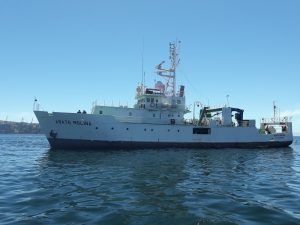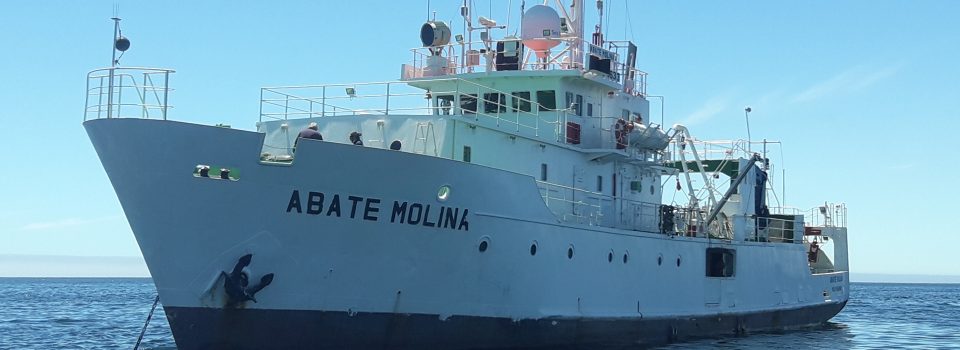Chile, Colombia, Ecuador and Peru carry out a joint oceanographic cruise in the Pacific Ocean in order to research El Niño phenomenon
September 27th, 2021 It is an international commitment coordinated by South Pacific Permanent Commission (http://cpps-int.org/). to assess El Niño or La Niña phenomenon presence as well as anomalies on the South American coasts that may affect national ecosystems. This joint cruise has more than 15 years of history and has delivered one of the largest collections o Chilean ocean oceanographic data variability and knowledge.
It is an international commitment coordinated by South Pacific Permanent Commission (http://cpps-int.org/). to assess El Niño or La Niña phenomenon presence as well as anomalies on the South American coasts that may affect national ecosystems. This joint cruise has more than 15 years of history and has delivered one of the largest collections o Chilean ocean oceanographic data variability and knowledge.
Between September 22nd and October 23rd, 2021, Chilean Fisheries Development Institute (IFOP) is conducting the cruise associated with the annual project “Bio-oceanographic conditions and evaluation of the spawning stock of anchovy between Arica and Parinacota and Antofagasta regions year 2021 ”which is part of the XXIV version of the Joint Regional Cruise, coordinated by the South Pacific Permanent Commission , where Colombia, Ecuador, Peru and Chile participate in a simultaneous and regional study effort for the study of the El Niño phenomenon, which has a new cold La Niña phase to begin in the coming months.
The national cruise will be developed within ASIPA 2021-2022 agreement framework and financed by Economy and Smaller Companies Undersecretariat . Therefore, IFOP will carry out prospecting cruises to obtain the samples and data necessary to develop the project according to the established methodologies.
The oceanographic egg and acoustic cruise is in charge of Hernán Reyes, Oceanographer and uses Abate Molina Ship as a scientific platform. A second ship is GAROTA III, which will carry out sampling of anchovy eggs in the area under Guillermo Galindo’s responsibility .
These cruises are part of the projects carried out by IFOP Oceanography and Environment Department ,Fisheries Research Division.
This project main objective is to evaluate anchovy spawning stock and to determinate oceanographic conditions during maximum reproductive activity period in the area between Arica and Parinacota, and Antofagasta regions. For this, a sampling of anchovy eggs and adults will be developed in the northern zone of Chile, information that will be used to estimate spawning stock biomass , through Daily Egg Production Method (MPDH). This method is considered a fundamental tool for anchovy fishery management in Chilean north .
Together, a monitoring of oceanographic and meteorological conditions will be developed. Which will serve to detect and evaluate environment impact on this resource, being able to serve for advice in decision-making and planning of fishing activity in the short, medium and long term. It is worth mentioning the participation of eight researchers, technologists and laboratory analysts who actively participate in this project execution.
